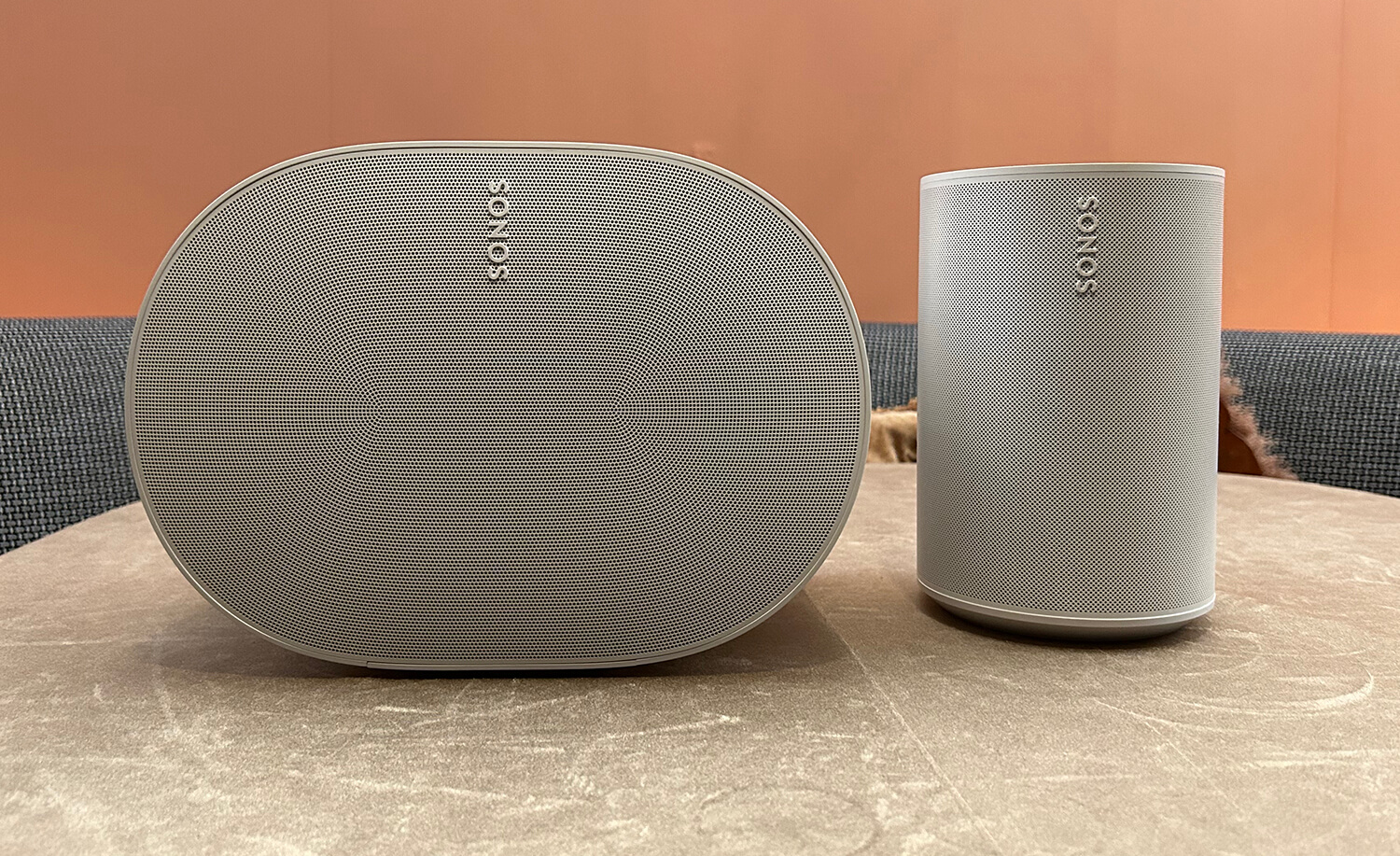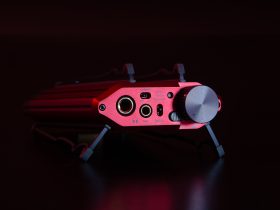In late February, Sonos invited a select group of journalists, including WiFi HiFi, to experience its latest products: the Era 100 and Era 300 speakers. The flagship model Era 300, which boasts a unique, oval-shaped design, adds, for the first time for Sonos, spatial audio and Dolby Atmos support, along with Wi-Fi 6, Bluetooth, line-in, and more.
What You Need to Know About The Sonos Era 100 and Sonos Era 300
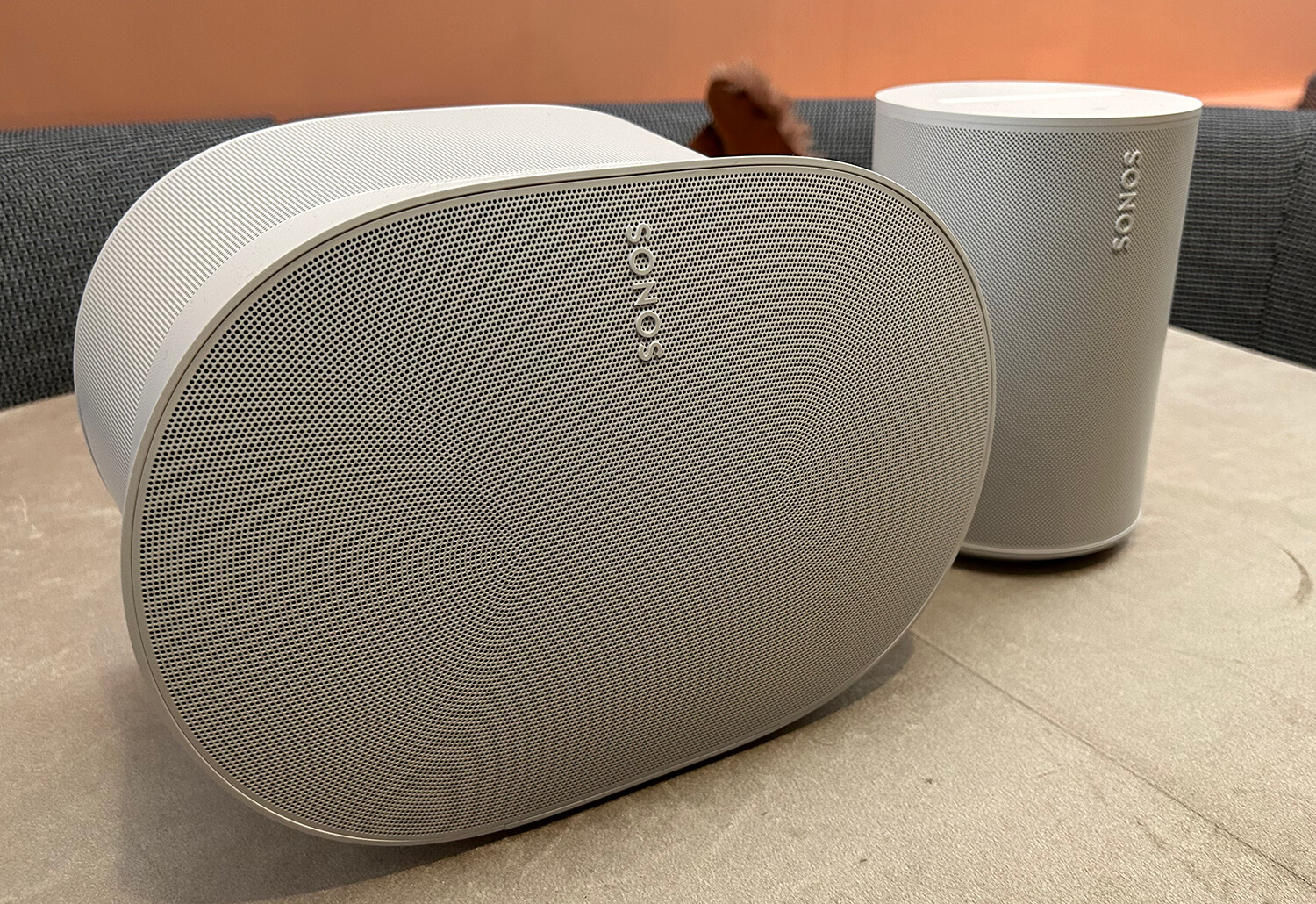
The new line begins with the Sonos Era 100, which the company says will replace the Sonos One. Compared to the Sonos One, it is less than an inch taller and deeper, offers stereo sound from a single speaker, a 47% faster processor and new co-neural processor that improves performance, as well as deep bass thanks to the 25% larger woofer. “If you side-by-side listen to the Sonos One and an Era 100,” Ryan Moore, Principal Product Manager, Hardware at Sonos told me in an interview during the event, “it’s a pretty significant performance difference between the two.”
Like the Sonos Era 300, the Sonos Era 100 includes Bluetooth and line-in so you can connect audio sources like a turntable for enhanced listening. Of course, you can also connect it with other Sonos speakers to deliver a full home theatre set-up, like a Sonos Arc soundbar and subwoofer, or pair two for a more immersive experience.
Both speakers include a new version of Trueplay called QuickTune that can be performed from the speaker itself using the built-in mic. The idea is to extend the tuned sound experience to Android users, who previously could not use Trueplay. The traditional Trueplay method whereby you walk around the room with your phone to capture every acoustic property to optimize the listening experience is still possible for Apple device users, who will be presented with both options during the set-up process. Moore notes that the Advanced Tune version of Trueplay for Apple users collects more data points so it’s “more detailed. But,” he adds, “we’re confident that QuickTune will provide a great experience for most people.”
The speakers have a new capacitive volume slider on the top along with dedicated skip and replay controls. Since they also include Bluetooth as a wireless streaming alternative to Wi-Fi, there’s also a Bluetooth pairing button. A speech bubble control, meanwhile, can be used to deactivate the voice assistant when desired; and a switch on the back can slide to disconnect power to the microphone.
The Sonos One and Sonos One XL will remain on the market for another few months so customers with a single unit can grab a second one if desired for a home theatre or stereo pair (should they decide not to upgrade to the Era models just yet). But once inventory is cleared out, those speakers will become defunct.
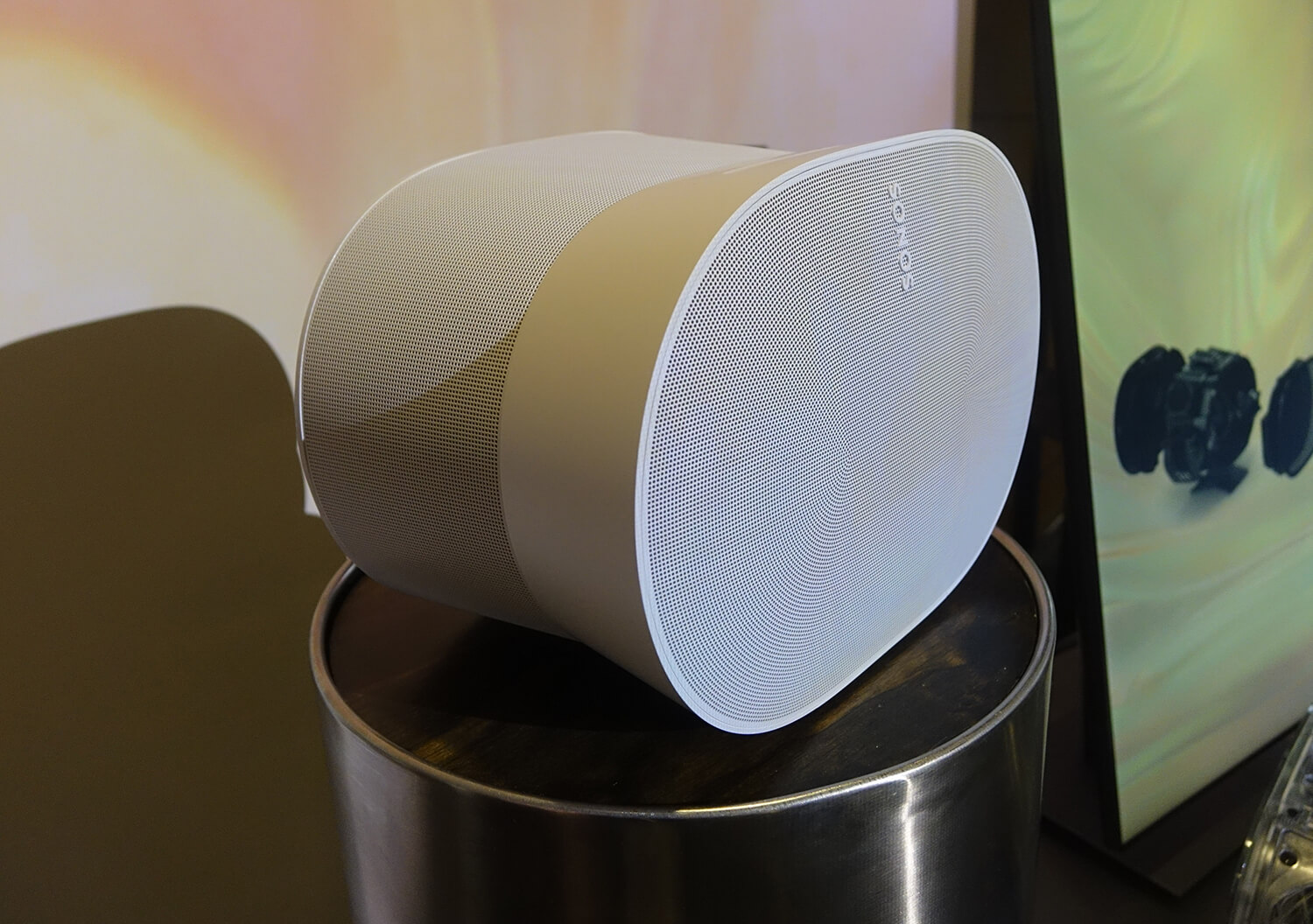
The big story, however, is with the flagship Era 300, which is said to be Sonos’ best-sounding speaker to date. At the New York City event, we sat through an extensive demo featuring two Sonos Era 300s at the back corners of the room as rears paired with a Sonos Arc soundbar and two subwoofers, mimicking a 7.1.4 Dolby Atmos set-up. Led by Giles Martin, Sound Experience Leader at Sonos (and a music expert with an impressive resume that includes multiple Grammy Awards as a music producer, composer, arranger and creative leader), we watched clips from movies like Top Gun: Maverick and A Quiet Place and listened to a diverse selection of songs by modern pop artists like Post Malone and Lizzo as well as smooth blues numbers, and tunes like Finneas’ “A Concert Six Months From Now.”
The speakers sounded clear and the audio immersive, enveloping us within the room. When jets flew overhead, it was like they were zooming right over our heads. We felt every terrifying moment as Emily Blunt’s character in A Quiet Place tried desperately to avoid making any creak or squeak so the low-grumbling monster who was on the hunt (ironically, following every little nuance of sound) couldn’t find her.
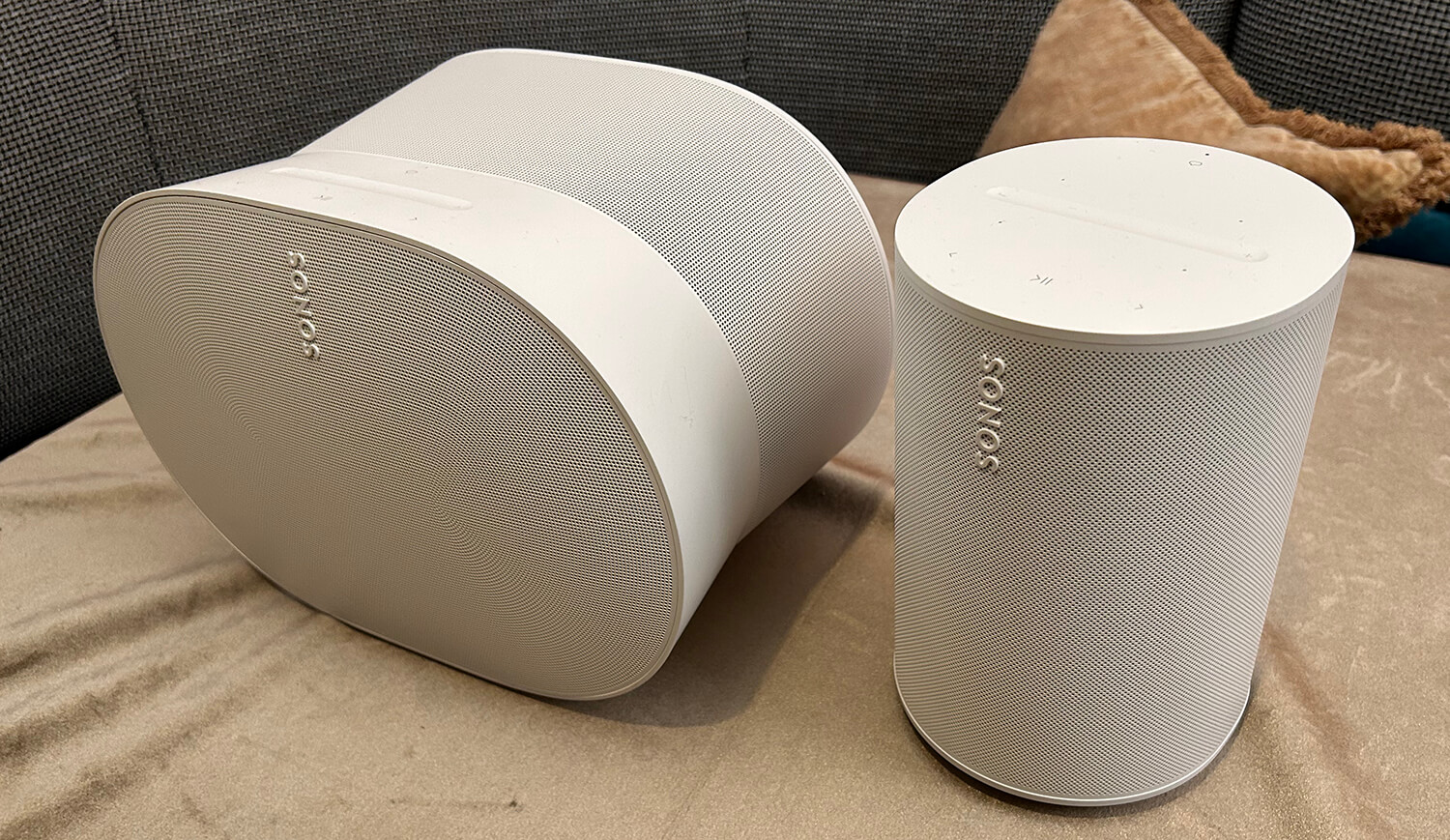
While I wasn’t sitting in the optimal “sweet spot,” but rather in the back, right corner of the room, I heard enough to determine that these speakers rival any others in their price category. The height, rear, front, and centre channels were beautifully mimicked using just two rears, a soundbar, and two subs. A true Dolby Atmos set-up, of course, includes ceiling mounted speakers for the height channels along with front and rear channels plus a sub. But as a simple and affordable set-up for the living room or music listening room, the Sonos gear is pretty darn impressive.
Moore touts the “simplicity that you get with a soundbar and two of these speakers giving you four height channels that are reflecting off the ceiling. I haven’t A-B tested it,” he notes, referring to a true Dolby Atmos set-up with wired height speakers, “but I think it’s pretty close. And you’re not drilling holes in your ceiling and running wires everywhere to create that sense of immersion. I have two of these up above my kitchen cabinets, two subs, and an Arc by my TV and it feels like I’m in a home theatre. I can’t imagine it being much better.”
With USB-C line-in for connecting a device like a turntable, Wi-Fi 6, Bluetooth, and, of course, smart assistant support including Amazon Alexa and Sonos Voice (no Google Assistant), the Era 300 is Sonos’ most feature-rich speaker to date. (The Era 100, it should be noted, includes all the above as well.)
While the speakers, particularly the Era 300s, can be used alongside other speakers (indeed, Sonos will likely offer a bundle with two Era 300s, a Sonos Arc, and a sub, Moore confirms), they’re also designed for stereo sound with music. Set up a single Era 300 in an office, bedroom, or kitchen, meanwhile, and it will still “sound great and provide a next level sense of immersion with your content,” says Moore.
What Makes These Speakers Different?

What makes Sonos’ approach different? Sonos spent time with creators tuning the speakers to make sure they sound the way they should, including working with Martin and artists through the Sonos Soundboard to articulate sound as best as possible. The Era 300 has directional drivers that face where the audio should be going. “When a piece of Dolby Atmos content is rendered,” explains Moore, “it’s telling the speaker ‘I have a centre channel, a height channel, I have a left and a right’ and we have specific drivers that we play that content back through instead of a dome speaker lined with tweeters trying to create an array and sending audio where it may think it should go.
“We have a very clear sense,” he continues, that “if you tell me you want left, I’m going to give you left. Or you say you have centre, I have a centre speaker that I’m going to shoot right at the person. I think that provides a better sense of playing back content that’s true to the source and is clear and precise.”
Another small but notable change with the Era speakers versus previous generation Sonos products is that Sonos has replaced the assembly inside to use screws versus adhesives, which makes the speakers easier to disassemble and repair if needed. This can help keep the speakers in use for longer. Sonos is also using new paper packaging as part of its shift to more environmentally friendly processes and components.
Should You Upgrade?
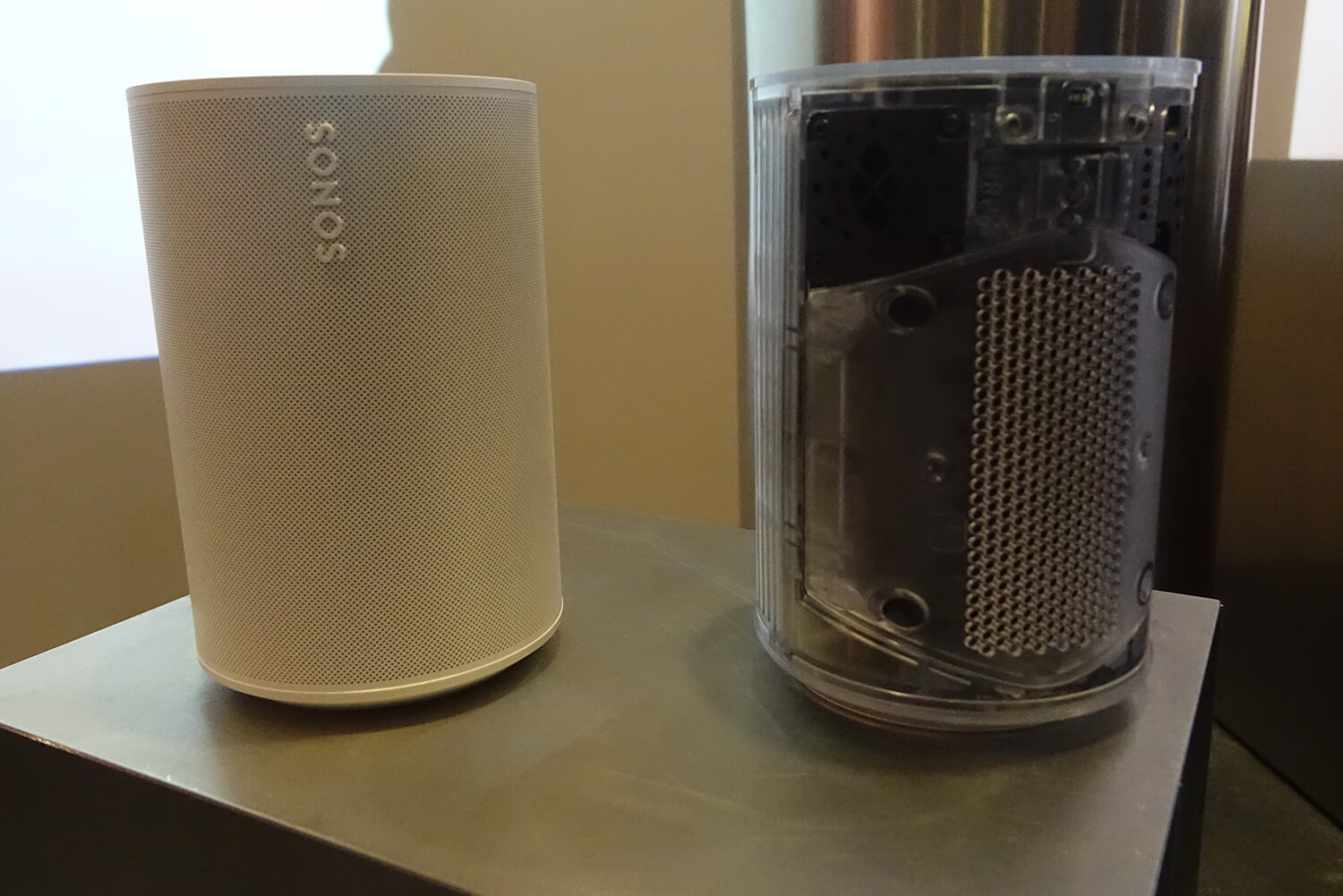
The big question: is there a reason to get excited about these new speakers? The answer, at least for fans of Sonos or those looking to improve sound in their living rooms or music rooms versus what they get from their TV or basic, entry-level soundbar alone, is a resounding yes.
At $559 for the Sonos Era 300 in Canada (US$449), the Era 300 is more expensive than the Apple HomePod and Amazon Echo Studio, both of which also offer Dolby Atmos and spatial audio. It is, however, slightly less expensive than the Sonos Five, making it an option to consider for those who didn’t want to fork over $700 for that speaker. Meanwhile, with stereo sound purportedly from a single speaker, the Era 100 is a good investment at $319 (US$249) that you’ll be satisfied with even if you don’t buy it in pairs just yet.
Dolby Atmos and spatial audio are the big selling features with the Era 300. And Moore notes that as Amazon, Apple, and other music streaming services support this format (not to mention video streaming services and other video formats), “we want to provide a great experience for customers with this amazing, immersive content.”
It’s worth noting that Sonos has also announced that it is adding support for spatial audio on Apple Music starting March 28 for not only the Era 300 but also the Sonos Arc and Beam (Gen 2).
So, should upgrade your old Sonos speakers? It depends. Keep in mind that to truly enjoy immersive Dolby Atmos and spatial audio content, you need to be listening to Dolby Atmos and spatial audio content. This involves subscribing to the proper tier of your music streaming, television, or movies service and/or hardware. If you’re buying new, go with the Era 300s. If you already have Sonos Ones, enjoy them a little longer before jumping on board with the Era 100s. With that said, if you’re looking for a single speaker for the home office, kitchen, bedroom, or den, the Era 100 might be worth grabbing so you can move your Sonos One (or pair of Ones) to another location in the home.
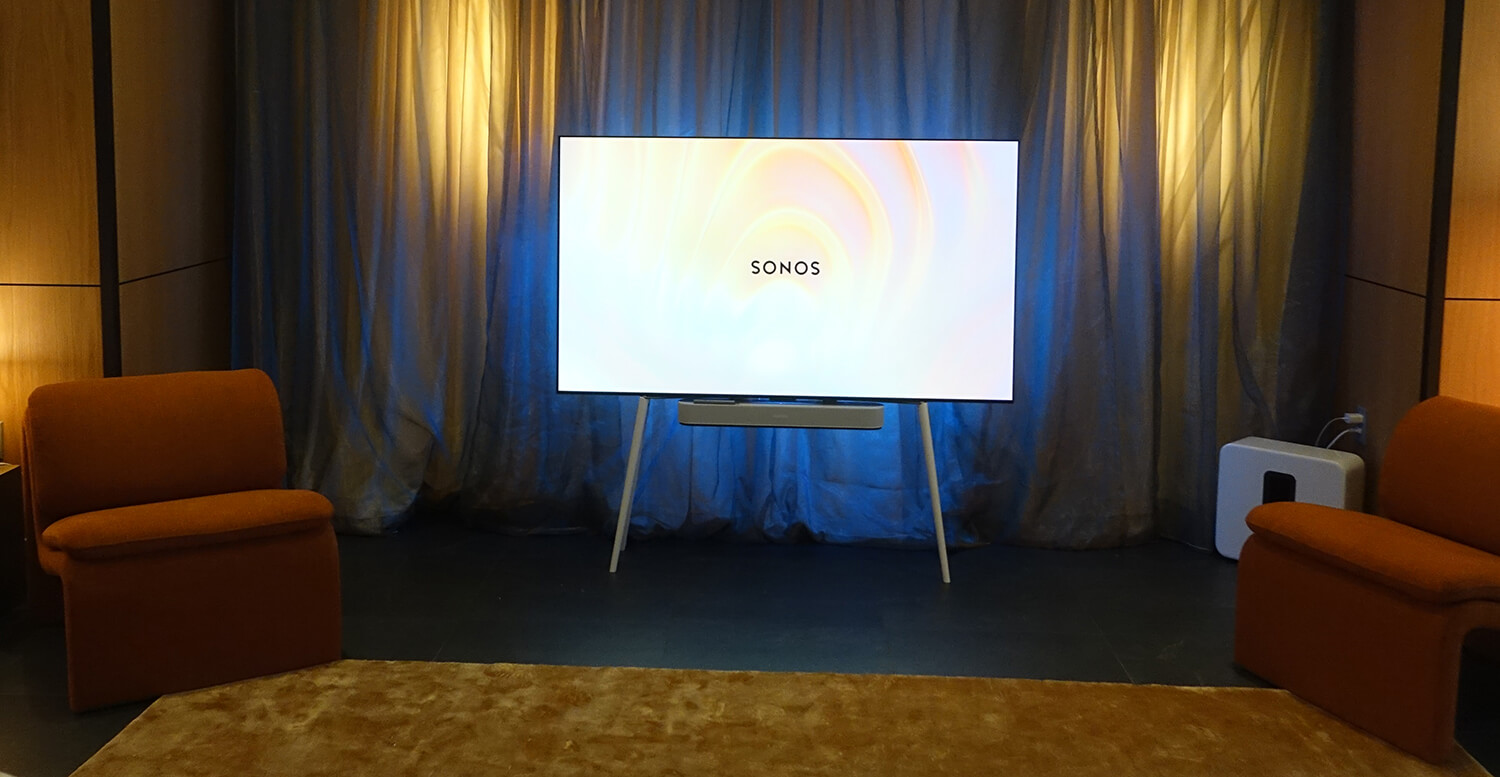
For a speaker to combine with your Sonos Arc soundbar and subwoofer to enhance the home theatre or music listening experience, a pair of Era 300s for more immersive music, movies, TV shows, and other audio content will be satisfying for most. Compared to the top-line Sonos Five, you’re getting worthwhile upgrades like Dolby Atmos, spatial audio, Bluetooth, and Wi-Fi 6. Android device owners, meanwhile, will appreciate being able to tune the speaker using the QuickTune feature, something that isn’t possible with as much precision with older-models speakers like the Sonos Five. This might not be a sole reason to upgrade, but it’s a nice-to-have when considering the new speakers.
Both the Sonos Era 100 and Era 300 will be available by the end of March in either black or white, employing a subtler hue than previous generation speakers and made using post-consumer recycled materials. Either speaker marks an affordable price of entry for a greatly improved sound experience.
What’s next for Sonos?
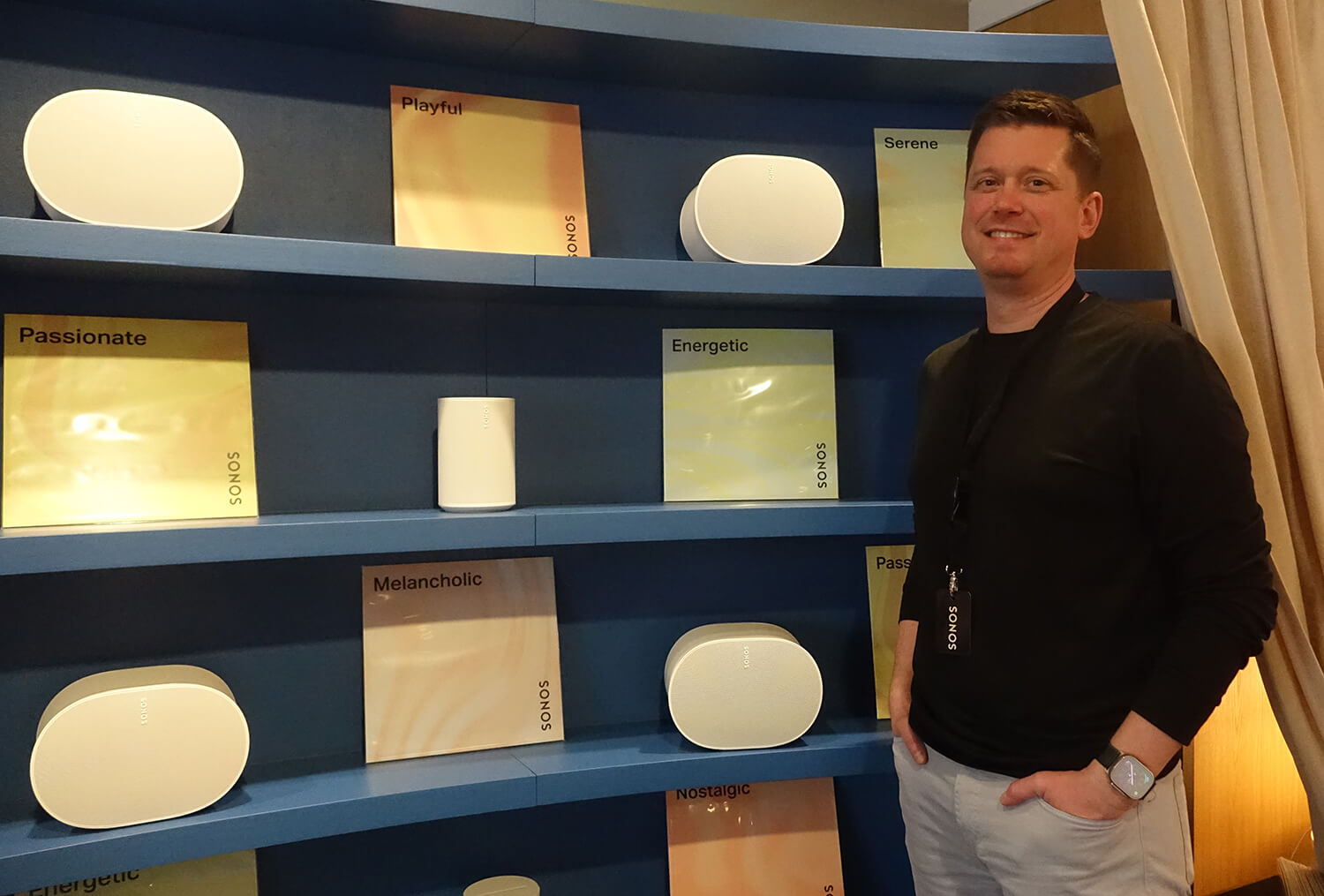
While sources like The Verge have reported that Sonos plans to enter four new product categories in the coming years, including one reportedly this year, there was nothing of the sort introduced at the event. No Sonos turntable nor the long-rumored Sonos headphones (yet, at least). Moore would only say that Sonos “had nothing else to announce” at this time.
Sonos, over the years, has become involved in other categories, with products like its joint Symfonisk line of Wi-Fi frames, lamps, and speakers with Ikea, Sonos Radio HD, partnerships with Audi for in-car entertainment, as well as the partnership with Sonance for architectural speakers.
For now, the Era 100 and particularly Era 300 mark a step up for Sonos that shows the company is serious about fine-tuning the audio experience for its customers while still maintaining a relatively affordable price point. That’s something the masses can get behind.





